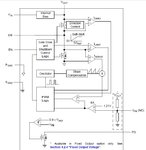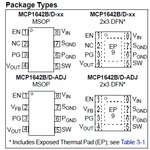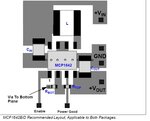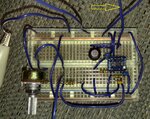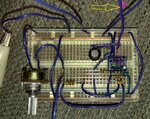Ser35
Newbie level 4
Hello,
I am having a problem with the "MCP1642B - ADJ boost converter, in that it is not giving the 5V it is supposed to give: it sits at 4 Volts.
I built the circuit as in the Typical Application example, or also Figure 6.1 from the same datasheet (Figure 6.1 "Portable USB Powered by Li-Ion").
Here are my component values:
Cin = Cout = 47µF
L = 4.7µH
Rtop = 976 KΩ
Rbot = 300 KΩ
Vin = 3.3 V (from a step-down converter)
Rpull-up = 1 MΩ between the Vout pin and Power Good - PG - pin.
One thing that I noticed is that if I ground ONLY the "Sgnd" pin, the Vout is as calculated based on the resistor values and the vFB of aprox 1.21 V.
But if both the Pgnd and Sgnd are grounded, connected at the same GND node, then the output is 4V and no more.
Any suggestions with the same, or similar devices, are appreciated.
I am having a problem with the "MCP1642B - ADJ boost converter, in that it is not giving the 5V it is supposed to give: it sits at 4 Volts.
I built the circuit as in the Typical Application example, or also Figure 6.1 from the same datasheet (Figure 6.1 "Portable USB Powered by Li-Ion").
Here are my component values:
Cin = Cout = 47µF
L = 4.7µH
Rtop = 976 KΩ
Rbot = 300 KΩ
Vin = 3.3 V (from a step-down converter)
Rpull-up = 1 MΩ between the Vout pin and Power Good - PG - pin.
One thing that I noticed is that if I ground ONLY the "Sgnd" pin, the Vout is as calculated based on the resistor values and the vFB of aprox 1.21 V.
But if both the Pgnd and Sgnd are grounded, connected at the same GND node, then the output is 4V and no more.
Any suggestions with the same, or similar devices, are appreciated.
